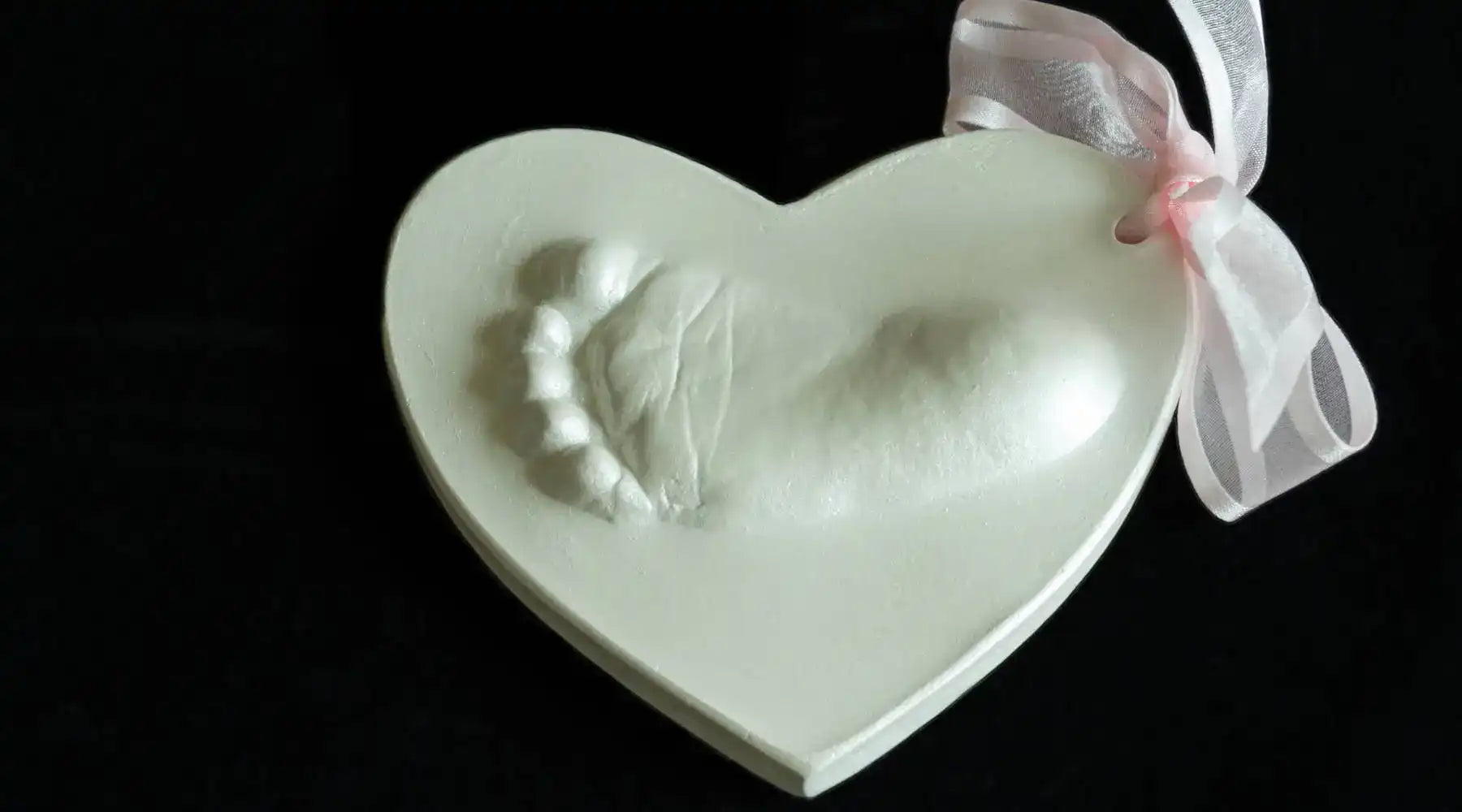Newborn Diapering Basics
Learn More
Diapering a newborn is one of the most frequent tasks in the early weeks. You’ll get better at recognizing signals, choosing product types, and interpreting what’s normal—especially when it comes to diaper changes, preventing rashes, and newborn poop. Below are expert-backed guidelines to help you stay on top of it without stress.
How often should I change a newborn’s diaper?
Newborns generally need a diaper change every 2-3 hours, or as soon as the diaper is wet or soiled. That adds up to about 8-12 changes per day once feeding is established. Early on, during the first 48 hours, fewer wet diapers are common as milk supply is just coming in.
How many wet diapers should a newborn have per day?
By about day 4 or 5, a newborn should have 6-8 wet diapers in 24 hours. If fewer, especially if baby seems hungry or lethargic, bring up with pediatrician.
What kind of diapers are best for newborns—cloth or disposable?
There’s no one right answer—both types work well. Disposables tend to be more convenient, especially at night or when you’re out. Cloth may be more eco-friendly, cost-effective long-term, and gentle on skin (if changed promptly and washed properly). Many parents use a mix—disposables for convenience, cloth when possible.
What’s normal for newborn poop?
Here’s what the poop journey usually looks like:
- Days 1–2: Meconium – thick, sticky, tar-like, almost black or dark green.
- Days 3–4: Transitional stools – greenish-brown as meconium clears out.
- After Day 5:
- Breastfed: Mustard yellow, seedy, loose.
- Formula-fed: Tan to yellow-brown, a bit thicker.
Loose, frequent stools are expected for breastfed infants; formula stools are firmer. You should contact your pediatrician if you see white, red, black after meconium, or consistently watery stools.
What colors or smells of poop are cause for concern?
If stools are white or very pale (may suggest liver or gallbladder issue), red (blood) or maroon, black (after meconium period), or very watery (possible infection or intolerance), contact your healthcare provider.
Diapering Products & Tools
Learn More
Diapering and potty training are two of the most talked-about parts of early parenthood. From choosing between cloth and disposable diapers to handling diaper rash, leaks, and blowouts, parents often have endless questions in the newborn months. As your child grows, those diapering concerns eventually shift into potty training—another big milestone that requires patience, consistency, and the right tools.
What should I pack in a diaper bag?
A well-stocked diaper bag makes outings smoother. Essentials include:
- 4-6 clean diapers
- Wipes + travel pack of scented‐free wipes
- Diaper cream or barrier ointment
- Portable changing pad
- Extra baby outfit (and maybe one for you for mess emergencies)
- Burp cloths and a pacifier or small toy for distraction
- Hand sanitizer and disposable plastic/wet bags for soiled items
What are diaper caddies and how do I organize them?
A diaper caddy is a portable organizer for home diaper changes. Keep one in key spots like the nursery, living room, or wherever you change diapers most often. Fill it with: diapers, wipes, rash cream, extra outfits, burp cloths, and other daily essentials. Organizing by frequency of use—items you grab most often in front—can speed up changes.
Are diaper pails, warmers, and “eco” diapers worth it?
Write a clear and concise answer to guide your customers.
When do I size up?
Write a clear and concise answer to guide your customers.
Cloth Diapering
Learn More
Cloth diapering has evolved significantly—modern cloth diapers are much more convenient, customizable, and eco-friendly than you might expect. If you’re weighing the decision between disposables and cloth, understanding what works, how to wash, and how many you need will help you build a stash that fits your life, budget, and values.
Pros/cons of cloth—what should I expect?
Pros:
- Long-term cost savings: although there's a higher upfront investment, cloth diapers often cost much less than disposables over the diapering years.
- Environmentally friendlier: reduced landfill waste, fewer plastic and gel fillers.
- Fewer chemicals, dyes, and fragrances—better for sensitive skin.
- Customizable fits, variety of styles (pocket, all-in-one, hybrids) with fun designs.
Cons:
- Frequent washing: cloth diapers require regular laundering (every 1–2 days) to stay clean and avoid odor or buildup.
- Higher initial cost: you’ll likely spend more up front on diapers, inserts, liners, and setup.
- Bulkier under clothes: some styles are thicker, which can affect fit under snug clothing.
- Less convenience for travel or childcare settings, unless you plan ahead.
How many do I need and how do I wash them?
To have a comfortable rotation, here’s a rough guideline:
- Newborns (0-3 months): ~20-30 diapers (they may go through 8-12 changes/day)
- Infants (3-12 months): ~14-18 diapers
- Toddlers (12+ months): ~12-16 diapers
Having 2-3 dozen diapers (diaper + insert sets) gives enough flexibility so washes don’t feel daily or overwhelming.
Following a good washing routine keeps cloth diapers clean, safe, and long-lasting. Here’s a widely recommended method:
- Remove solids: use a diaper sprayer or scrape off solids into the toilet—breastfed poop is water-soluble, so less prep may be needed.
- Store soiled diapers in a waterproof wet bag or dry diaper pail until wash day.
- Pre-wash or rinse (cold or warm) without detergent to remove urine and loose debris.
- Main wash on hot or warm with a cloth-diaper-safe detergent. Avoid fabric softeners, strong perfumes, optical brighteners, or bleach (unless specifically directed for sanitizing).
- Extra rinse(s) if your washer allows, to ensure all detergent is removed.
- Drying: line dry in sunlight when possible (helps with stains and sanitization). If using a dryer, use low to medium heat, especially for diaper covers with waterproof linings and elastic. Avoid high heat which can degrade waterproof layers and elastic.
For stubborn odors, an occasional sanitizing wash with bleach or mineral strip treatment may be necessary.
Pocket vs. hybrid vs. all-in-one—what’s the difference?
Here are brands often recommended for cloth diaper novices, for their ease of use, reliability, and community support:
- BumGenius (all-in-one style)
- Thirsties (covers & inserts)
- GroVia (hybrid style)
- AlvaBaby (budget options)
Starting with a trial pack or buying lightly used items lets you test fit, absorbency, and ease of washing without too much risk.
Pocket diapers have removable inserts; hybrids allow either cloth or disposable inserts; all-in-ones are fully built-in absorbency. Each has different trade-offs in ease, drying time, wash demands, and cost.
Diaper Rash Care & Prevention
Learn More
Diaper rash is one of the most common skin issues babies face. With good prevention and prompt care, most rashes resolve quickly. Understanding what causes them, which treatments work best, and when to call a pediatrician will help keep your baby’s skin healthy and comfortable.
How do I prevent diaper rash?
Diaper rash (diaper dermatitis) usually happens when skin is left in contact with moisture (urine, stool) too long. Other causes include:
Friction from tight diapers or clothing rubbing against skin.
Irritation from diapers, wipes, detergents, or fabric softeners—especially those with fragrances or harsh chemicals.
Yeast (fungal) or bacterial overgrowth, especially in moist skin folds or after antibiotics use.
Changes in diet / starting solids, which alter stool composition and frequency.
Best treatments—and when to call the doctor?
For most rashes, barrier creams with zinc oxide or petroleum jelly are first-line treatments.
Other options include:
- Thicker paste forms for more severe or red rashes (higher % zinc).
- Anti-yeast (antifungal) creams if there's evidence of yeast overgrowth (bright red patches, especially in folds).
- Mild hydrocortisone (0.5-1%) creams may be prescribed briefly by the pediatrician.
When choosing a cream: look for one that is fragrance-free, thick enough to form a protective barrier, and safe for your baby’s skin type (especially if sensitive or eczema-prone).
If a rash persists after basic steps, here’s what to try:
- Change diapers more often; keep the area clean and dry.
- Give some diaper-free time so air can help heal the skin.
- Use thick barrier creams at every diaper change.
- Switch to unscented wipes or rinse with warm water and soft cloth to avoid irritating ingredients.
- If there are signs of infection (blisters, oozing, spreading redness, or fever), or if it doesn’t improve in 3-4 days, contact your pediatrician. Prescription solutions (antifungal, antibiotic, or mild steroid creams) may be needed.
If the rash has blisters, cracks, or open sores; has yellow crusts or pus; is spreading beyond the diaper area; causes fever; or doesn’t improve after 3–5 days of home care, you should contact your pediatrician.
Can foods trigger diaper rash?
Yes. Introducing new solid foods (especially acidic ones like citrus, tomatoes) can change stool acidity and frequency, which sometimes irritates the skin upon contact. If a rash appears consistently after a new food, you might temporarily limit that food and monitor.
What’s the difference between an irritant rash, yeast rash, and allergic diaper rash?
- Irritant rash: caused by prolonged exposure to urine and stool; redness over convex surfaces; improves with dry time.
- Yeast rash: shiny, bright red, often in skin folds; may have “satellite” points; often after antibiotic use.
- Allergic rash: appears after contact with allergen (new diaper, wipes, detergent); may flare at each exposure.
Nighttime Diapering
Learn More
Overnight is often the longest stretch your baby will go between diaper changes, so nighttime leaks and discomfort are common challenges. With the right diapering strategy—diaper fit, absorbency, and timing—you can help everyone sleep more soundly.
How do I prevent overnight leaks?
To reduce leaks at night:
- Use overnight or high-absorbency diapers (or add a booster pad)
- Ensure a snug fit at the waist and leg openings (no gaps)
- Consider sizing up if leaks are recurring, but avoid too large that it causes fallout of absorbent material
- Use a waterproof mattress protector
How often should I change a diaper in the middle of the night?
If your baby consistently sleeps long stretches, usually changing only when necessary (soiled or leaking) is enough. Frequent changes just for wetness may disrupt sleep more than they help.
Potty Training Readiness & Methods
Learn More
Potty training is a major milestone but it doesn’t happen on a fixed schedule. What matters most is child readiness—physical, developmental, behavioral—rather than just age. Starting when your child is ready helps reduce frustration, build confidence, and make the whole process smoother.
When should we start—and what are true readiness signs?
Many children begin showing readiness between 18 and 24 months, though it’s common for kids to start training closer to 2 to 3 years old. It’s best to wait until several readiness cues are present rather than pushing based purely on age.
Watch for these indicators:
- Can stay dry for 2+ hours, or stay dry after naps.
- Shows interest in the toilet, or imitates adults or older siblings using it.
- Can follow simple instructions (e.g. “sit here,” “let’s try the potty”).
- Has the motor skills to pull pants up/down, walk to/ from potty, sit down.
- Signs of discomfort with dirty diapers or wanting to be changed, or expresses awareness of needing to go.
Is there a “best age” or timeline?
There’s no one “best age” for every child. Experts generally recommend waiting until readiness cues are there—usually between about 2 and 3 years. Starting too early can lengthen the training period and lead to frustration; waiting too long may delay independence. The age for “fully trained” (daytime dryness with few accidents) often occurs between 24-36 months, with nighttime dryness coming later.
Most kids are reliably trained during the day by ages 2.5 to 4 years. Nighttime dryness may take longer—many children aren’t consistently dry at night until around 4-5 years old, and occasional bedwetting up to age 6-7 is still considered within the range of normal.
What’s the 3-day method—and is gradual training okay?
The 3-day method involves going diaper-free (except for naps and bedtime) over a dedicated three-day period at home. Parents prompt the child to use the potty frequently, praise successes, and clean up accidents calmly. Some kids respond quickly, while others may need more time. Consistency is crucial for this approach.
Absolutely. A slower approach—like starting with underwear during the day and diapers at night—works well for many families. This method is less stressful and allows kids to build confidence at their own pace.
Potty chair or seat reducer—what’s better?
Potty chair: Small, child-sized, less intimidating, and easy for toddlers to access independently.
Seat reducer: Fits onto the regular toilet and helps kids transition directly to the big potty.
Many families use both—starting with a chair for confidence and then moving to a reducer.
Setbacks, Tools & On-the-Go
Learn More
Even after your child makes great progress, setbacks in potty training are completely normal. Regression can happen during big life changes (like a new sibling, starting daycare, or moving) or even for no clear reason. Staying calm, consistent, and supportive is the best way to help your child get back on track.
What do I do if my child regresses after potty training?
Regression is common and usually temporary. Stay calm and avoid punishment, which can make resistance worse. Instead:
- Return to basics with gentle reminders and regular potty breaks.
- Keep the potty easily accessible.
- Praise effort, not just success.
- Look for possible triggers such as stress, illness, or changes in routine.
Most children bounce back within a few weeks once the stressor passes and routines stabilize.
How do I handle public restroom fears?
Many toddlers are afraid of loud toilets, automatic flushers, or unfamiliar environments. To ease the transition:
- Visit bathrooms together so your child can watch and learn.
- Start with quieter restrooms when possible.
- Bring a portable travel potty seat for comfort and familiarity.
- Offer encouragement for small steps (like flushing or washing hands).
Patience and positive reinforcement go a long way in building confidence.
Is bedwetting normal after potty training?
Yes. Nighttime dryness often takes much longer than daytime training. Many kids are not consistently dry at night until ages 5–7, and occasional bedwetting up to that age is still normal. Helpful tips include:
- Limiting large drinks before bedtime.
- Offering a bathroom trip right before sleep.
- Using waterproof mattress protectors for easy cleanup.
If bedwetting continues beyond age 7 or is paired with other symptoms, check with your pediatrician.
Diaper-Free Tools & Tricks
Learn More
Potty training isn’t an all-or-nothing process. The right tools, encouragement strategies, and consistent routines at home and daycare can make the transition smoother for both parents and kids.
Are training pants helpful?
Yes—training pants (pull-ups or cloth versions) can help toddlers transition out of diapers. They allow kids to practice pulling pants up and down, while still offering protection from accidents. However, some children treat them like diapers, which can slow progress. Many parents use them only for naps, nighttime, or outings, while sticking to underwear at home.
How can I support potty independence at daycare?
Consistency between home and daycare is key. Support your child by:
- Sharing your child’s potty routine with caregivers.
- Packing extra clothes and underwear.
- Encouraging your child to tell teachers when they need to go.
- Using the same language and expectations at home and daycare.
When kids feel supported in both environments, they’re more likely to succeed.
What role do rewards and praise play in potty training?
Positive reinforcement motivates many children. Try:
- Praising effort (“You tried the potty!”) as well as success.
- Offering small, non-food rewards like stickers, stamps, or extra storytime.
- Giving high-fives, claps, or cheers to make it fun.
As potty use becomes routine, gradually fade rewards so the behavior sticks without external motivation.
Are potty training books or videos helpful?
Yes—kid-friendly books and shows normalize the process and make potty training less intimidating. Popular choices include Potty by Leslie Patricelli, Potty Time by Daniel Tiger’s Neighborhood, and Once Upon a Potty by Alona Frankel. Reading or watching together helps children see potty use as a normal, expected part of growing up.
Top potty mistakes to avoid?
Starting before readiness, punishing accidents, inconsistent routines between home/daycare, expecting night dryness too soon, and forgetting to praise effort.
How do I keep the whole process calmer?
Simple routines, clear cues, child-sized tools, praise over pressure, and humor. Remember: progress isn’t linear—consistency wins over time.










